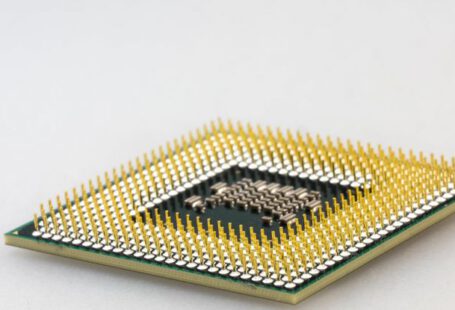Experiencing a blue screen error on your computer can be a frustrating and disruptive experience. These errors, also known as the “Blue Screen of Death” or BSOD, often appear suddenly and can indicate a serious problem with your system. However, there’s no need to panic when faced with a blue screen error. By following some simple steps, you can effectively deal with these issues and get your computer back up and running smoothly.
Understanding Blue Screen Errors
Blue screen errors are typically caused by issues such as hardware failures, incompatible drivers, corrupted system files, or software conflicts. When your computer encounters a critical error that it cannot recover from, it displays a blue screen with an error message and restarts to prevent further damage. While these errors can be alarming, they often provide valuable information that can help you identify the underlying issue.
Troubleshooting Blue Screen Errors
When faced with a blue screen error, the first step is to note down the error message that appears on the screen. This message usually contains a specific error code that can help you pinpoint the cause of the issue. Once you have recorded the error message, try restarting your computer in safe mode to see if the problem persists. Safe mode allows you to boot your system with only essential drivers and services, making it easier to troubleshoot the issue.
Updating Drivers and Software
Outdated or incompatible drivers are a common cause of blue screen errors. To prevent these issues, make sure to regularly update your device drivers and software. You can do this by visiting the manufacturer’s website and downloading the latest updates for your hardware components. Additionally, using a reliable driver update tool can help you automatically identify and install the necessary driver updates for your system.
Checking for Hardware Issues
If updating drivers and software does not resolve the blue screen error, the next step is to check for hardware issues. Over time, hardware components such as RAM, hard drives, or graphics cards can develop faults that may lead to system crashes. To diagnose hardware problems, you can run built-in diagnostic tools or third-party software to test your system’s components for errors. If a hardware issue is detected, you may need to replace the faulty component to resolve the problem.
Running System Restore
In some cases, a recent software installation or system update may have triggered the blue screen error. If you suspect that a specific change caused the issue, you can use the System Restore feature to revert your system to a previous state. System Restore allows you to roll back your computer’s settings to a point in time when it was functioning correctly, helping you undo any recent changes that may have led to the error.
Performing a Clean Windows Installation
If all else fails and you continue to experience blue screen errors despite your best efforts, performing a clean installation of Windows may be necessary. This process involves reinstalling the operating system from scratch, erasing all existing data and programs on your computer. Before proceeding with a clean installation, make sure to back up your important files to avoid losing any data. Once Windows is reinstalled, you can gradually reinstall your programs and drivers to create a clean and stable system environment.
Dealing with blue screen errors can be a daunting task, but with the right approach and troubleshooting techniques, you can effectively resolve these issues and restore your computer’s functionality. By understanding the causes of blue screen errors, updating your drivers and software, checking for hardware issues, and utilizing system restore and clean installation options when necessary, you can overcome these challenges and keep your system running smoothly. Remember to stay patient and methodical in your troubleshooting efforts, and don’t hesitate to seek professional help if needed.





